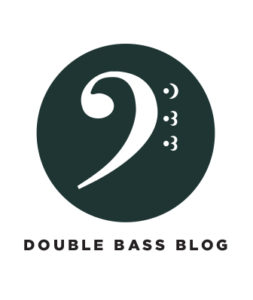When I ask great musicians what they most enjoy about playing their instrument, I’ve noticed that making a beautiful sound is at the top of most lists. That simple pleasure of making a beautiful sound come forth from an instrument is what keeps musicians in the game for the long haul. It’s a simple yet complex also process.
My journey toward a “perfect sound” continues to this day, and I suspect that’s the truth for most musicians. But I’ve gotten a lot closer over the years, and it has been a fascinating process.
This series digs into the myriad factors pertaining to tone and what I’ve learned in my own journey for a great sound. I’m sure that I’ve spend hundreds of hours pondering these truths over the past few decades, and I hope that they resonate with you as well!
Lesson No. 1 – The Instrument Matters!
Let’s face it—a huge percentage of overall sound quality comes from the instrument itself. You can “gussy up a pig” to a certain extent with set-up, strings, and the like, but frankly, there’s a reason that one bass costs $1200, another costs $20,000, and another goes for $100,000.
Like venturing into the high-end microphone or camera world, these differences are not necessarily directly proportionate to the amount spent. A $100,000 instrument doesn’t necessarily sound “twice as good” as a $50,000 instrument. But, just as a $4000 mic has an enhanced capacity to deliver sound than a $300 mic, a higher-end bass will have more a different quality of tone than a lower-end bass.
There are a huge number of variables: quality of wood, quality of construction, age of wood, design of the resonating space. But each instrument, even those from the same maker, sounds a little different and responds in a different fashion.
My First Big Upgrade
I remember the moment I brought home my very own instrument—it’s like it was yesterday.
My first instrument was a Lowendahl bass from the late 19th century that had been restored by my first bass teacher. I remember seeing that beautiful wood for the first time and looking at the flamed maple in awe. How different it was from the plywood school bass I had been playing on! The neck was beautifully flamed as well, and I gazed in awe at the expanse of new ebony that constituted the fingerboard.
I rosined up, set my bow on the string, and drew my first note out of the bass. I was struck by all the colors and textures that I was hearing. It was as if my plywood school bass played in black and white, and I was experiencing color television for the very first time. There was a warm and satisfying low end, a nice reedy quality to the strings, and a sparkling high end. I was in love.
Getting that bass kicked me into high gear in the practice room. I was 15 at the time, and I went from squeaking out a few notes after school to committing myself to a couple hours a day each evening. My playing took off as a result.
Better Instruments Increase Your Artistic Capacity
This is a hard concept to articulate, but I firmly believe that it’s true. A higher quality instrument will almost always be easier to play than a lower quality instrument. It will also have a wider tonal palette and be more responsive to your musical gestures. Through playing on that higher quality instrument, you develop the capacity to create certain musical shapes that you would have either struggled mightily with or might not have been able to create at all.
As a result, you learn how to create these shapes and gestures. You can then carry these new tools over to another double bass. You don’t revert back to lower quality playing on a lesser instrument. Your body and mind have learned how to create that resonance and pull that tone. But you can’t learn those skills without spending time on a good instrument.
The reverse is also true: garbage instruments produce garbage habits. Set-up and good teaching can help for sure, but if you’re playing on a bass with a warped neck, pushing down strings that are three inches off the fingerboard, and gazing into an open seam on the side of the bass… well, you’re probably not increasing your artistic capacity like I described.
Also…
Better Instruments Increase Your Motivation
Musicians like to make pretty sounds. It’s simple, but it’s true. Musicians also don’t like to play uncomfortable instruments. Upgrading your instrument helps both of these categories. I saw this play out in my own playing, both when I upgraded to that Lowendahl initially, and when I got a better bass later in life.
Learn More About Double Bass Luthiers
I’ve interviewed many prominent luthiers for my Contrabass Conversations podcast. You can check them out in the player below, or subscribe to the podcast to get them delivered to you automagically:
Next Time
Part two of this series digs into the bow and the massive impact that it has upon your sound and even your overall technique.
Thanks for reading, and drop me a line at doublebassblog@mac.com if you’d like to get in touch!
Bass News Right To Your Inbox!
Subscribe to get our weekly newsletter covering the double bass world.

